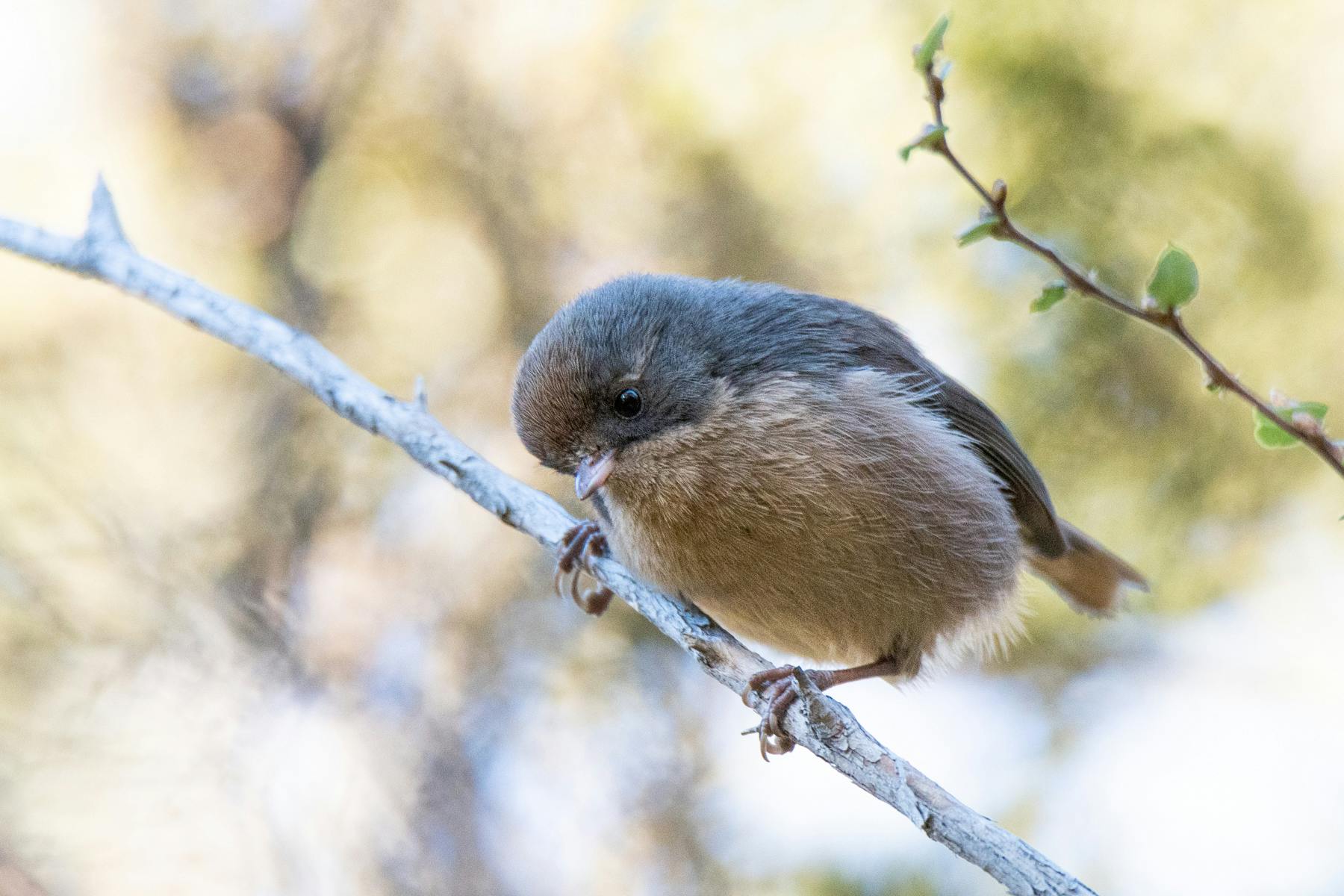You can find this bird on your Great Walk, writes Shaun Barnett
Beady-eyed, grey-faced, yellow-fronted, brown-backed tiny insectivores that flock together with birds of a different feather. That’s one way to sum up one of our smallest endemic birds, known as the pīpipi or brown creeper.
The Māori name pīpipi seems a fair representation of their most common chittering call, although their repertoire also includes canary-like notes similar to its relative the mohua/yellowhead.
Te Wai Pounamu/South Island trampers are more likely to hear these small, brown birds than see them. And even if sharp eyes spot them flocking through the trees, these tiny passerines are quite often present in mixed flocks which might also include tauhou/silvereyes, or riroriro/grey warblers.
Pīpipi (Mohoua novaeseelandiae) belong to the same genus as mohua and pōpokatea/whitehead. The females weigh only about 11g, and the males a slightly heavier 13g.
They mainly eat invertebrates, but also the occasional fruit. It seems somewhat cruel that all three of these small Mohoua birds are subject to long-tailed cuckoos raiding their nests, tossing out the parent’s eggs and laying their own. Unwittingly, the hard-working foster parents have to raise a long-tailed cuckoo chick that quickly grows to become many times their own size. In a curious twist of nature, pīpipi will mob together to drive off long-tailed cuckoo adults but don’t seem to recognise the imposter chick in their very midst.
Like many endemic birds, pīpipi declined during colonial times, though numbers seem to have since stabilised. Populations exist, patchily, in the north-west of Te Wai Pounamu, on the western side of Kā Tiririti o te Moana/Southern Alps, and in the forests of Banks Peninsula, Dunedin and the Catlins. Here are four tramping tracks where you might see them, including three Great Walks.
Perry Saddle, Kahurangi National Park
On the steady climb to Perry Saddle on the Heaphy Track, it’s worth looking out for pīpipi in the forest. Shortly beyond Perry Saddle Hut, there’s a section of stunted mānuka forest which has the advantage of a lower canopy to spot these small brown birds.
Pororari Hut, Paparoa National Park
The new Pororari Hut on the Paparoa Track Great Walk occupies a knoll that was partly cleared to make room for the hut when it was built in 2017. From Punakaiki, the Paparoa Track climbs steadily through forest and you might spot small flocks of pīpipi, or at least hear them, in the diverse podocarp-broadleaf forest mixed with beech.
Silver Peaks Scenic Reserve, Dunedin
Dunedin’s Silver Peaks offer locals some of their most accessible backcountry, and also a chance to see pīpipi. For a day trip, try the Possum Hut route. Alternatively, for an overnight tramp, stay the night at Jubilee Hut.
Rakiura Track, Rakiura National Park
From its beginning at Lee Bay, the Rakiura Track Great Walk passes through extensive stands of mānuka en route to WoodingBay and Port William. This is ideal habitat to look out for pīpipi, as the low canopy height gives a better chance of spotting them.








